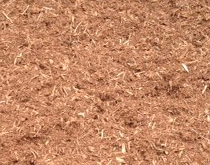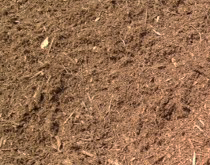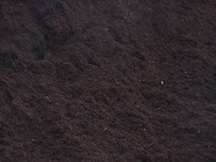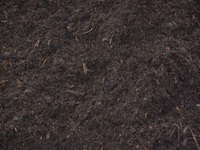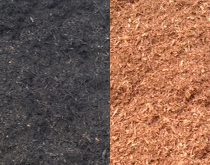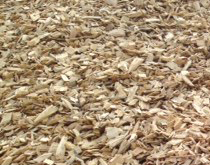Hemlock Bark Mulch Pine Bark Mulch Native Hardwood
Loam/Compost Colored/Dyed Mulch Playground Covering
|
COMPOST
|
COLORED DYED MULCH (Red, Black,
Cherry Brown, Dark Walnut, Brown) |
PLAYGROUND COVERING
CLEAN GROUND SOFTWOOD CHIPS |
Mulch FAQ's
Mulch: For the purpose of landscaping or erosion control Mulch is defined as Organic material, in this case wood products that have been ground to different consistencies.
Bark Mulch: This product is made by either pealing or grinding the bark off a tree. While there is always some wood fibers mixed in with the bark because of the process used to remove the bark from the log no additional wood "fillers" are added.
Double ground: This is a missleading term used to make the customer feel they are getting a better valued product. The first grinding occurs in the removal of the bark from the tree. At this point its called "Raw" bark. The first and only true grinding occurs next as the Raw Bark is ground into a consistent textured product. Any good grinding machine today has varying size screen which in one pass will do this. There is never a reason to Double grind mulch unless the proper machinery is unavailable.
Fillers: these are low cost wood products which can and are used by some mulch producers to stretch there finished product. Generally speaking Raw bark has the highest value then mill chips then whole tree chips then stumps in that order.
Bark verses wood mulch: Both will offer good ground protection and as they break down add nutrients to the soil. The big difference is Bark is a few years ahead of the wood in its cycle of breaking down. If using a product with a heavy concentration of wood material beware that when fertilizing your plants and shrubs use a little higher nitrogen fertilizer. The wood break down process takes nitrogen from the soil so you'll need to replace it.
The Best Mulch to use: This is the easiest question. Its whatever the lady of the house likes. You have the choices today that range from color to consistency to aroma. Visit your supplier and enjoy all those sights and aromas before you decide.
Bark Mulch: This product is made by either pealing or grinding the bark off a tree. While there is always some wood fibers mixed in with the bark because of the process used to remove the bark from the log no additional wood "fillers" are added.
Double ground: This is a missleading term used to make the customer feel they are getting a better valued product. The first grinding occurs in the removal of the bark from the tree. At this point its called "Raw" bark. The first and only true grinding occurs next as the Raw Bark is ground into a consistent textured product. Any good grinding machine today has varying size screen which in one pass will do this. There is never a reason to Double grind mulch unless the proper machinery is unavailable.
Fillers: these are low cost wood products which can and are used by some mulch producers to stretch there finished product. Generally speaking Raw bark has the highest value then mill chips then whole tree chips then stumps in that order.
Bark verses wood mulch: Both will offer good ground protection and as they break down add nutrients to the soil. The big difference is Bark is a few years ahead of the wood in its cycle of breaking down. If using a product with a heavy concentration of wood material beware that when fertilizing your plants and shrubs use a little higher nitrogen fertilizer. The wood break down process takes nitrogen from the soil so you'll need to replace it.
The Best Mulch to use: This is the easiest question. Its whatever the lady of the house likes. You have the choices today that range from color to consistency to aroma. Visit your supplier and enjoy all those sights and aromas before you decide.
